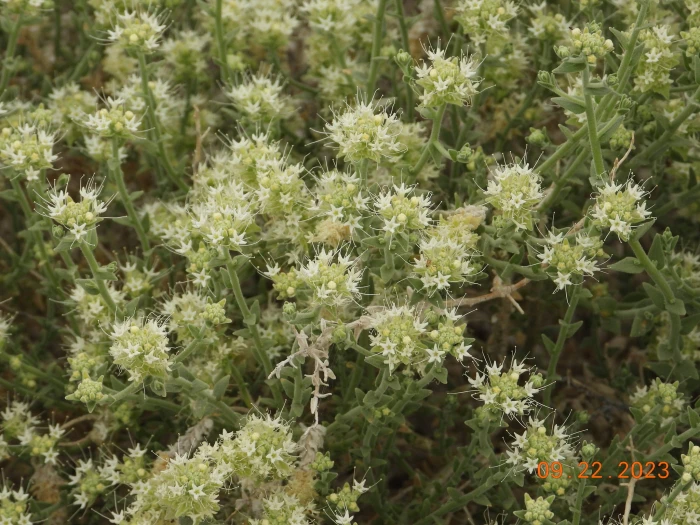Thurber’s Sandpaper Plant
(Petalonyx thurberi)
Thurber’s Sandpaper Plant (Petalonyx thurberi)
/
/

Diana
CC BY 4.0
Image By:
Diana
Recorded By:
Copyright:
CC BY 4.0
Copyright Notice:
Photo by: Diana | License Type: CC BY 4.0 | License URL: http://creativecommons.org/licenses/by/4.0/ | Rights Holder: Diana | Publisher: iNaturalist | Date Created: 2023-09-22T12:03:48-07:00 |

























Estimated Native Range
Climate Requirements for Concord, North Carolina
| This Plant | Your Site | Plant Suitability for Your Location | ||
|---|---|---|---|---|
| • Precipitation | 2" - 27" | 46" | Aquatic | Aquatic |
| • High Temp. | 77°F - 111°F | 90°F | Your summer temperatures are normal for this plant. | Excellent |
| • Low Temp. | 11°F - 47°F | 29°F | Your winter temperatures are normal for this plant | Excellent |
This plant may not grow well at your location - your precipitation is too high.
Summary
Petalonyx thurberi, commonly known as Thurber’s sandpaper plant, is a perennial subshrub native to the arid desert regions of the southwestern United States and northwestern Mexico, particularly thriving in sandy and gravelly soils of desert washes, scrublands, and rocky slopes. It typically grows up to 3 feet tall and wide, forming clumps with many rough-haired stems. The leaves are variable in shape, ranging from lance-shaped to triangular, and are sometimes toothed, with a distinctive sandpapery texture. From late spring to early summer, the plant produces showy clusters of white flowers that are tubular with petals fused near the tips, appearing in small racemes. The flowers are attractive to pollinators such as bees.
Thurber’s sandpaper plant is valued for its drought tolerance and unique texture, making it a suitable choice for xeriscaping, rock gardens, and naturalistic desert landscapes. It requires minimal maintenance once established and is best grown in full sun with well-draining soil. While it is not commonly used in traditional garden settings, its resilience to harsh conditions and interesting foliage make it an appealing option for gardeners looking to create a desert-themed garden. There are two subspecies, with the rarer ssp. gilmanii limited to the deserts in and around Death Valley. This plant is not known for significant disease or pest issues, but it may struggle in overly moist or rich soils.CC BY-SA 4.0
Thurber’s sandpaper plant is valued for its drought tolerance and unique texture, making it a suitable choice for xeriscaping, rock gardens, and naturalistic desert landscapes. It requires minimal maintenance once established and is best grown in full sun with well-draining soil. While it is not commonly used in traditional garden settings, its resilience to harsh conditions and interesting foliage make it an appealing option for gardeners looking to create a desert-themed garden. There are two subspecies, with the rarer ssp. gilmanii limited to the deserts in and around Death Valley. This plant is not known for significant disease or pest issues, but it may struggle in overly moist or rich soils.CC BY-SA 4.0
Plant Description
- Plant Type: Shrub
- Height: 1-3 feet
- Width: 1.5-2.5 feet
- Growth Rate: Moderate
- Flower Color: White
- Flowering Season: Spring, Summer, Fall
- Leaf Retention: Semi-deciduous
Growth Requirements
- Sun: Full Sun
- Water: Low
- Drainage: Fast
Common Uses
Bird Garden, Drought Tolerant, Low Maintenance, Showy Flowers
Natural Habitat
Native to arid desert regions, thriving in sandy and gravelly soils of desert washes, scrublands, and rocky slopes
Other Names
Common Names: Sandpaper plant, Thurber’s petalonyx
Scientific Names: Petalonyx thurberi
GBIF Accepted Name: Petalonyx thurberi